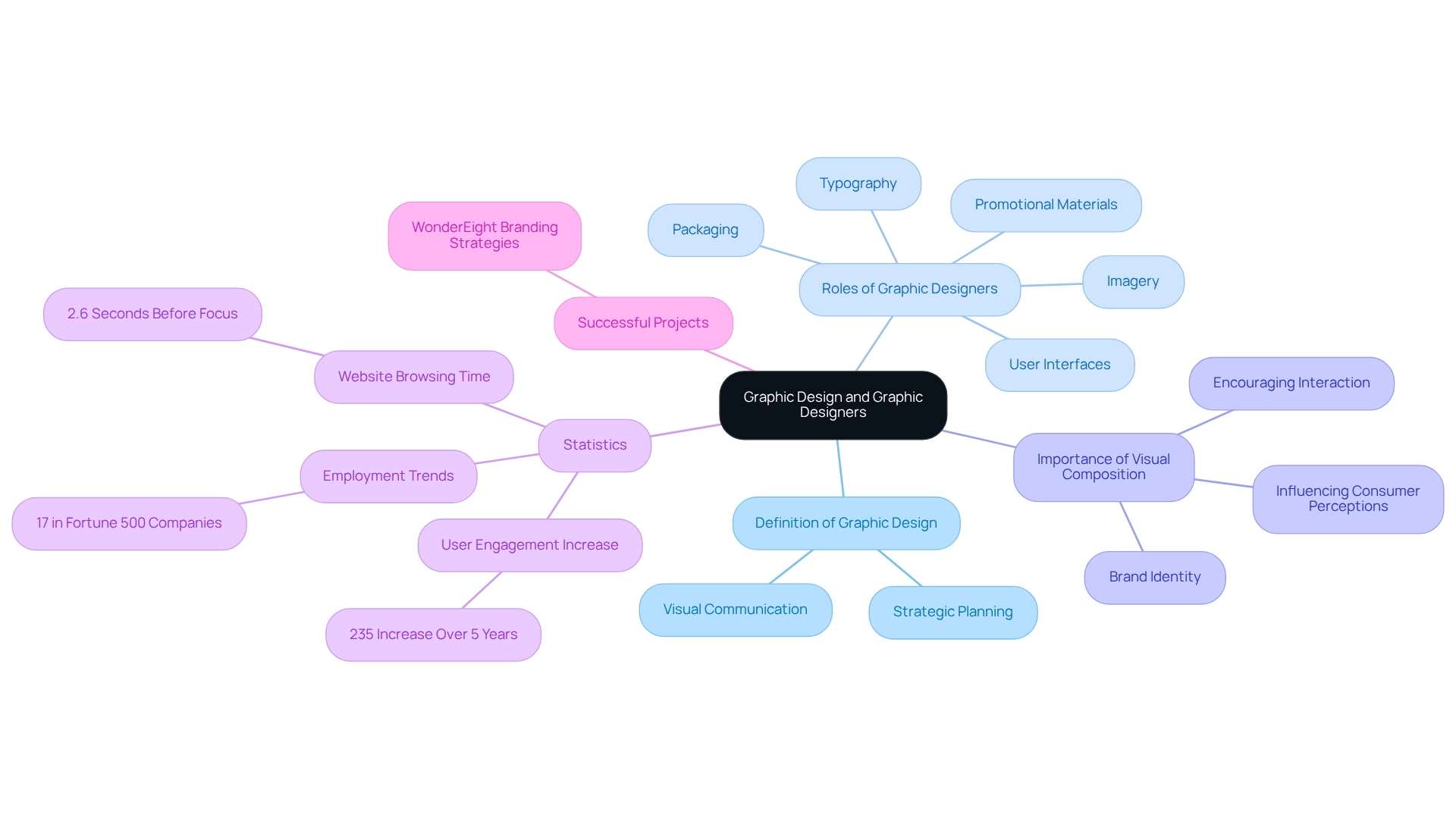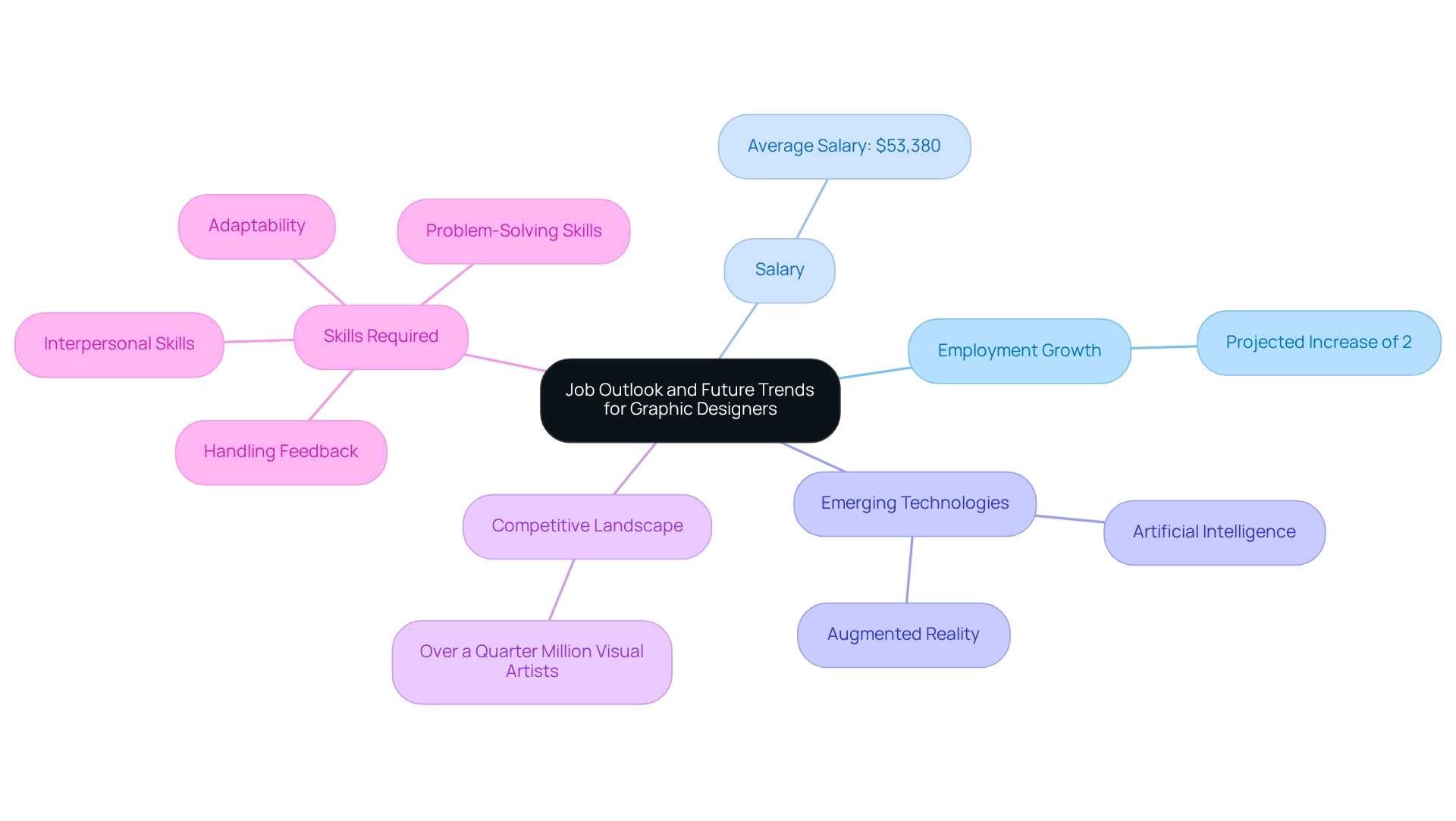General
Understanding Average Graphic Designer Pay in the USA for 2024
Overview
In 2024, the average compensation for graphic designers in the USA is projected to reach approximately $61,300. This figure reflects significant variations influenced by experience, geographic location, and industry specialization. The article substantiates this by outlining the salary ranges for both entry-level and experienced designers. It emphasizes the critical role that geographic location and sector demand play in shaping compensation levels, particularly in major urban areas.
Introduction
In a world increasingly driven by visual communication, graphic design stands out as a pivotal discipline that shapes how brands connect with their audiences. This multifaceted field transcends mere aesthetics; it involves the strategic crafting of messages through typography, imagery, and layout across various media. As businesses strive to engage consumers effectively, the role of graphic designers has become more critical than ever, influencing perceptions and driving brand loyalty.
Given the growing demand for skilled professionals and the evolving industry trends, understanding the landscape of graphic design—including salary expectations, job outlook, and the factors impacting compensation—becomes essential for both aspiring designers and established professionals. This exploration delves into the nuances of graphic design, revealing its significance in today’s marketplace and the opportunities it presents for creative minds.
Define Graphic Design and the Role of Graphic Designers
Graphic creation is a dynamic discipline that involves the strategic planning and projection of ideas through visual and textual content. It encompasses the creation of visual communications aimed at conveying specific messages to targeted audiences. Graphic artists skillfully utilize typography, imagery, color, and layout to create compositions across various media, including print, digital, and environmental contexts. Their duties are varied, encompassing the creation of promotional materials, crafting advertisements, developing user interfaces, and producing packaging.
The importance of effective visual composition transcends mere aesthetics; it plays a crucial role in influencing consumer perceptions and encouraging interaction with companies. Interest in user involvement has risen by 235% over the last five years, underscoring the essential function that visual presentation serves in shaping consumer behavior and enhancing interactions with products. Notably, approximately 17% of visual artists secure positions at Fortune 500 firms, highlighting the significance large corporations place on professional aesthetics to bolster their identity.
Successful visual projects, such as those executed by WonderEight, exemplify how strategic creativity can elevate company visibility. The agency’s comprehensive branding strategies merge innovative creative solutions with technology, including social media strategy and digital audits, to create memorable visual identities that resonate with audiences. Given that visitors typically spend only around 2.6 seconds browsing a website before focusing on a specific section, the necessity for intuitive design with a clear visual hierarchy becomes paramount, emphasizing the importance of deliberate visual design in attracting and retaining consumer attention.
In summary, visual design is not merely about producing aesthetically pleasing content; it is an essential component of branding and marketing strategies that fosters consumer engagement and influences brand identity, particularly for brand managers striving to enhance their brand’s impact.

Explore Average Graphic Designer Salaries in the USA for 2024
In 2024, the average graphic designer pay in the USA is significantly influenced by factors such as experience, location, and sector. Entry-level visual artists can anticipate an average salary of approximately $41,986 annually, while mid-level professionals typically earn between $55,000 and $72,420. Experienced visual artists and those in specialized roles can exceed the average graphic designer pay of $93,440. According to the Bureau of Labor Statistics, the average graphic designer pay in the USA for 2024 is around $61,300.
Geographic location is crucial in determining these salary figures; professionals in metropolitan areas often receive higher compensation due to increased demand and the elevated cost of living. For instance, in major cities, salaries can significantly surpass the national average, reflecting the competitive landscape of the industry. Furthermore, the 90th percentile yearly salary for visual artists reaches $100,450, underscoring the potential for substantial income in this sector.
While freelance income may be less predictable than full-time salaried roles, the industry is evolving. Compensation trends indicate a growing recognition of the value that skilled visual artists bring to businesses, with HR professionals noting an increasing willingness to invest in top talent to enhance brand success.
In West Virginia, the average salary for a visual artist stands at $38,480, derived from 82 salaries, highlighting the regional disparities in pay.

Analyze Factors Influencing Graphic Designer Salaries
Several critical factors shape graphic designer salaries, including experience level, education, geographic location, and industry specialization. Designers with extensive experience command higher salaries, reflecting their accumulated knowledge and successful project histories. Educational attainment plays a significant role; those with advanced degrees or specialized training often gain an advantage in salary negotiations.
Geographic location is another crucial determinant of pay. Designers in high-cost areas, such as San Francisco and New York, generally earn more than their counterparts in smaller markets. This disparity arises largely from higher living expenses and the concentration of industries that require innovative solutions in these urban centers.
Moreover, industry specialization can significantly influence compensation. Sectors like technology and advertising tend to offer higher salaries, driven by the need for cutting-edge design work that meets the evolving demands of the market. For instance, self-employed visual creators, who constitute 18% of the workforce, frequently manage diverse project deadlines and client expectations, which can also impact their total earnings. In 2024, understanding these elements is crucial for both aspiring and experienced visual artists aiming to enhance their earning potential based on the average graphic designer pay in the USA for 2024. Insights from educators in the field suggest that education not only enhances skill sets but also correlates with higher compensation, emphasizing the importance of continuous learning and professional development in this competitive landscape.
Furthermore, as David Mercado observes, women may possess an edge in areas that necessitate creativity, empathy, and emotional intelligence, making visual arts particularly attractive to many women. The effect of packaging appearance on buying choices—affecting three to seven out of ten shoppers—underscores the vital role visual creators play in influencing consumer behavior. A practical example is seen in the brand strategy development for Quaker Oats, where tailored design work led to improved brand recognition and customer loyalty, underscoring the value of effective design across various industries.

Examine Job Outlook and Future Trends for Graphic Designers
The job prospects for visual artists are projected to remain steady, with employment anticipated to increase by 2% from 2023 to 2033, as reported by the Bureau of Labor Statistics. While this growth rate is slower than the average across all professions, the demand for visual artists is largely fueled by the increasing need for visually engaging content across diverse platforms. Companies are increasingly recognizing the critical role of strong visual branding, leading to significant growth prospects in digital artistry, user experience (UX) creation, and interactive media.
With over a quarter million visual artists in the United States, the profession is undeniably competitive. The average salary for a visual artist stands at approximately $53,380 annually, reflecting the average pay for graphic designers in the USA for 2024, which is a crucial consideration for individuals entering this field. Emerging technologies, including artificial intelligence and augmented reality, are set to revolutionize the visual arts landscape, offering fresh avenues for creativity and innovation. Industry analysts predict that these advancements will not only enhance creative capabilities but also create a demand for professionals adept at integrating these technologies into their work.
A noteworthy example is the collaboration between WonderEight and Quaker Oats, which demonstrates how strategic branding can significantly enhance market positioning. By developing a cohesive brand message aligned with market trends, WonderEight illustrated the importance of adapting to evolving consumer demands—a trend that visual creators must also embrace.
As the industry evolves, visual creators must cultivate strong interpersonal and problem-solving skills, along with the ability to handle constructive feedback. This adaptability is crucial for navigating the shifting demands of the industry and maintaining relevance in a competitive job market. Furthermore, it is essential to distinguish between web developers, who are responsible for creating and maintaining websites, and digital designers, who concentrate on usability and layout. This differentiation impacts job roles and expectations within the graphic design arena.

Conclusion
The exploration of graphic design underscores its integral role in modern branding and marketing strategies. Graphic designers are tasked not only with creating visually appealing content but also with crafting strategic communications that resonate with targeted audiences. Their expertise in typography, imagery, and layout significantly influences consumer perceptions and engagement, ultimately driving brand loyalty. As the demand for compelling visual content continues to rise—particularly in digital and interactive media—the importance of skilled graphic designers becomes increasingly apparent.
Salary expectations for graphic designers in 2024 highlight the critical factors of experience, education, and geographic location in determining compensation. Entry-level positions provide a starting point, while specialized roles and advanced experience can lead to substantial earnings. The variations in pay across different regions and industries underscore the competitive landscape of the profession, emphasizing the necessity for continuous professional development and adaptability.
Looking ahead, the job outlook for graphic designers remains stable, with growth in areas such as digital design and user experience. As emerging technologies reshape the industry, graphic designers must embrace innovation and develop interpersonal skills to thrive in this evolving environment. The collaboration between brands and designers, as exemplified by successful partnerships, illustrates the potential for impactful design to enhance market presence and consumer engagement. Ultimately, the field of graphic design presents promising opportunities for those willing to navigate its complexities and continuously adapt to changing demands.
Frequently Asked Questions
What is graphic creation?
Graphic creation is a dynamic discipline that involves the strategic planning and projection of ideas through visual and textual content, aimed at conveying specific messages to targeted audiences.
What are the main responsibilities of graphic artists?
Graphic artists create promotional materials, craft advertisements, develop user interfaces, and produce packaging, utilizing typography, imagery, color, and layout across various media.
Why is effective visual composition important?
Effective visual composition influences consumer perceptions and encourages interaction with companies, playing a crucial role in shaping consumer behavior and enhancing product interactions.
How has interest in user involvement changed recently?
Interest in user involvement has risen by 235% over the last five years, highlighting the essential function of visual presentation in engaging consumers.
What percentage of visual artists work at Fortune 500 firms?
Approximately 17% of visual artists secure positions at Fortune 500 firms, indicating the importance large corporations place on professional aesthetics.
What role does strategic creativity play in company visibility?
Strategic creativity can elevate company visibility by merging innovative solutions with technology, as exemplified by successful visual projects executed by agencies like WonderEight.
How long do visitors typically spend browsing a website?
Visitors typically spend around 2.6 seconds browsing a website before focusing on a specific section, making intuitive design and clear visual hierarchy essential.
What is the overall significance of visual design in branding and marketing?
Visual design is crucial for branding and marketing strategies as it fosters consumer engagement and influences brand identity, particularly for brand managers looking to enhance their brand’s impact.



